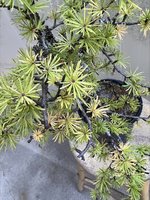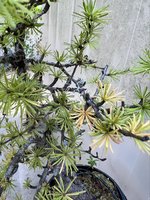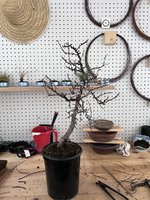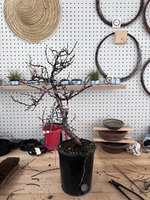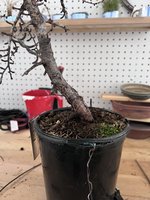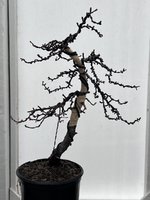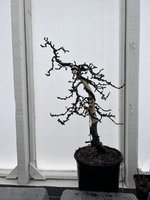hampton
Shohin
Over the past few months I've picked up a handful of American larch yamadori, it's been quite enjoyable having them on the bench. Japanese larch trees are what initially piqued my interest in bonsai.
To that end I know the pictured tree is a year out of collection and it was recommended to let it grow another year. I noticed some needle yellowing - do you think this is just the precursor to needle drop? Out of the five collected larches I have two are still green, two are in this state, and one is more yellow. If anyone has any insight it's very much appreciated - I'm just trying to get a handle on things before things get out of control. From a watering perspective I've kept them on the damper side but do let the pots dry almost all the way out before watering.
I'm looking forward to another year of consideration but if anyone has design input it's certainly welcome
Best,
Zak
To that end I know the pictured tree is a year out of collection and it was recommended to let it grow another year. I noticed some needle yellowing - do you think this is just the precursor to needle drop? Out of the five collected larches I have two are still green, two are in this state, and one is more yellow. If anyone has any insight it's very much appreciated - I'm just trying to get a handle on things before things get out of control. From a watering perspective I've kept them on the damper side but do let the pots dry almost all the way out before watering.
I'm looking forward to another year of consideration but if anyone has design input it's certainly welcome
Best,
Zak





